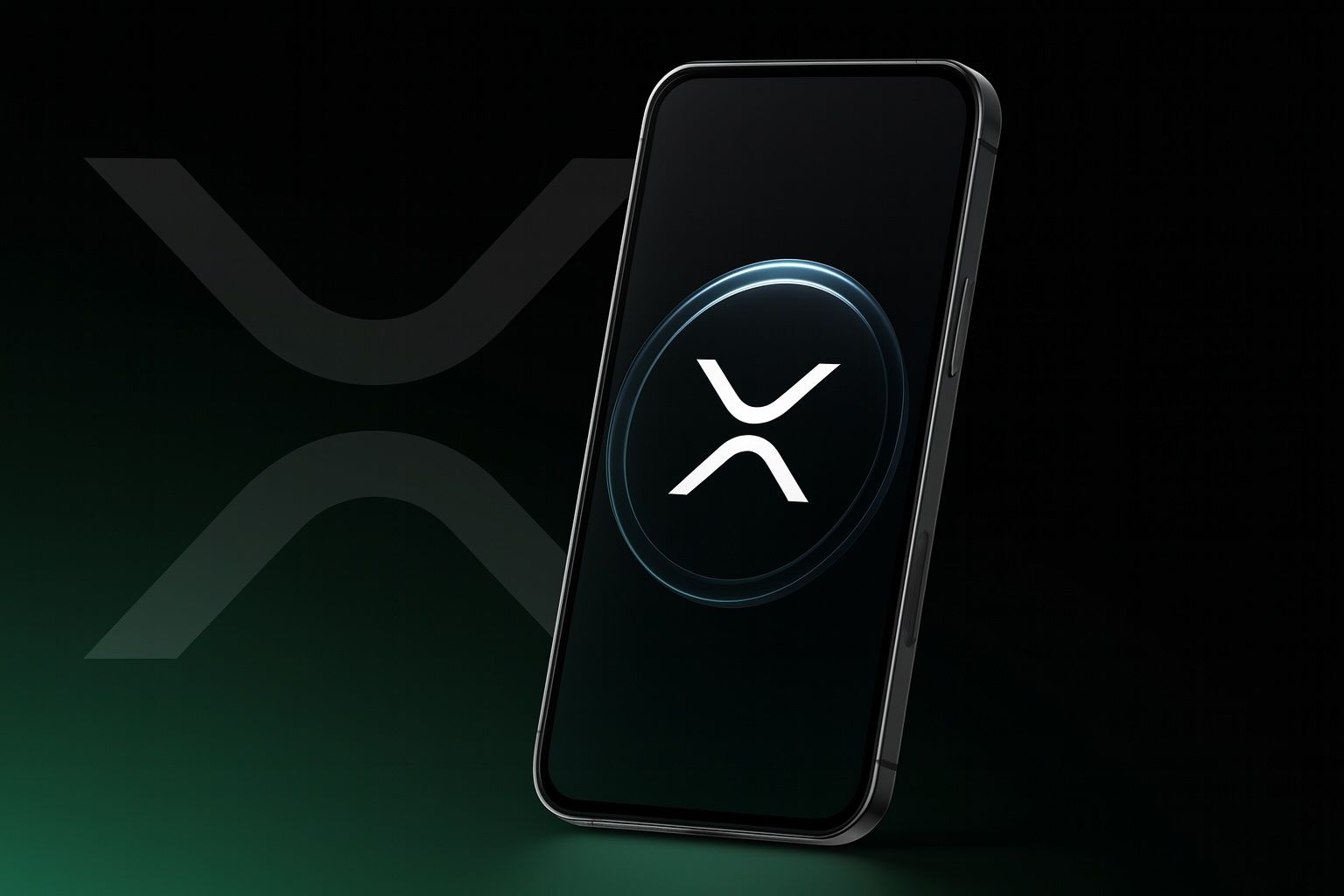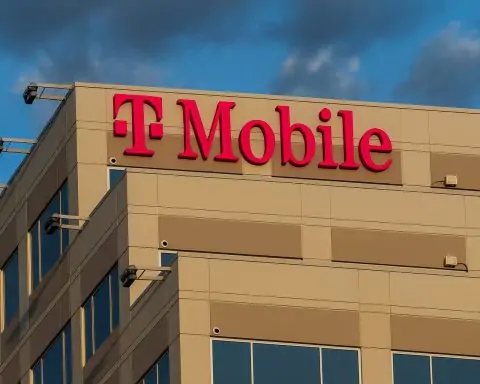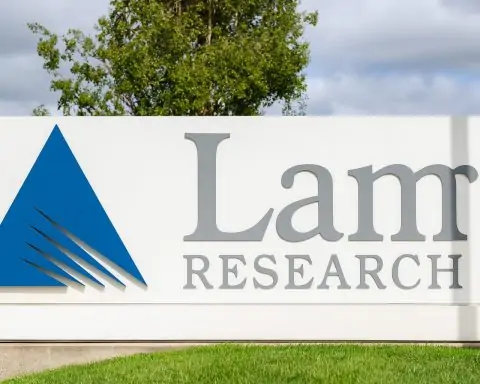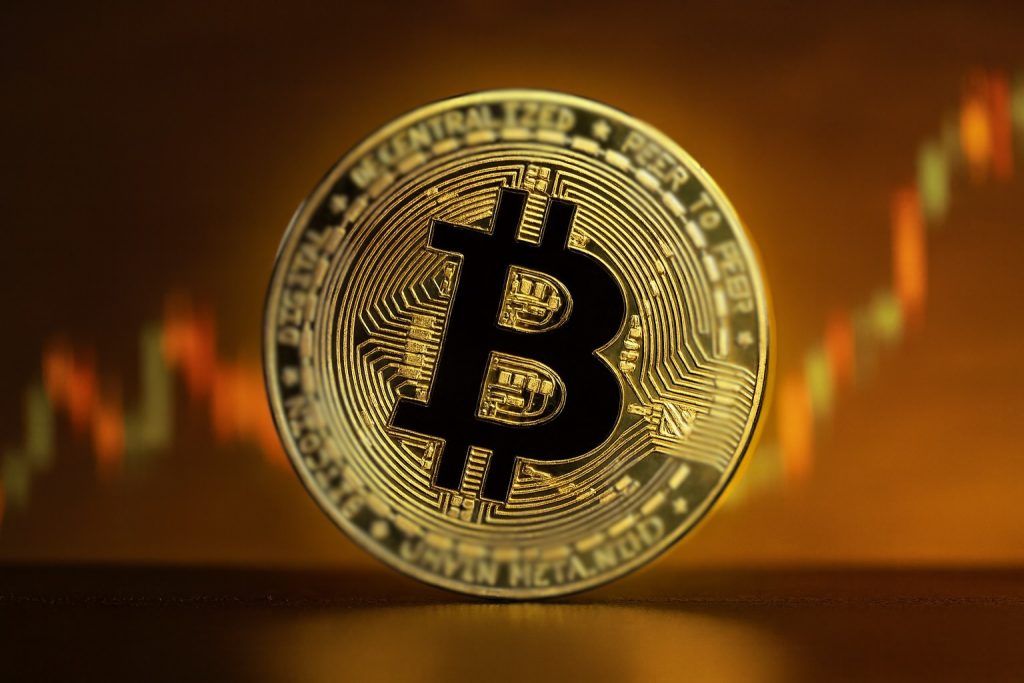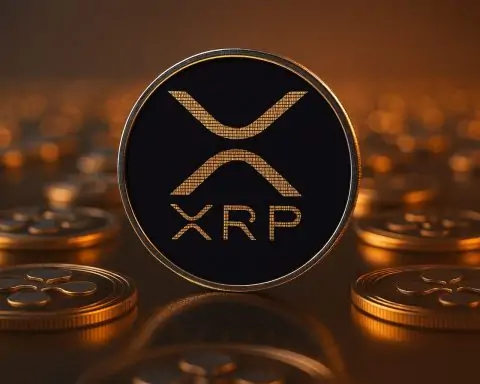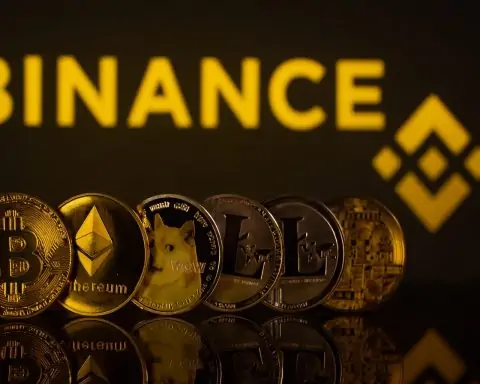Key Facts – October 28, 2025
- Current Price & Volatility:XRP is trading around $2.63 as of Oct. 28, 2025 [1], after rebounding from a roller-coaster month. On Oct. 10, XRP plunged ~40% within minutes (from ~$2.80 to ~$1.6) amid a crypto flash crash triggered by a macro shock [2]. It swiftly recovered to the mid-$2 range by the next day [3], highlighting both the market’s fragility and resilient dip-buying support.
- Regulatory Clarity – Ripple vs SEC: A major overhang lifted in August 2025 when the U.S. SEC settled its lawsuit with Ripple. Ripple paid a $125 million fine, and crucially XRP was affirmed not to be a security in public sales [4]. This landmark resolution (cementing a 2023 court ruling) removed years of legal uncertainty. U.S. exchanges like Coinbase promptly relisted XRP [5], and Ripple’s legal chief hailed the settlement as “the end of the case,” restoring regulatory clarity and opening the door to institutional adoption [6].
- ETF Catalyst – Imminent Decisions: Multiple asset managers (BlackRock, Grayscale, WisdomTree, and others) have filed for spot XRP ETFs, with SEC decision deadlines clustered in late October [7]. A brief U.S. government shutdown early this month delayed reviews, but analysts still put the odds of approval at ≈95% by year-end [8]. In fact, one U.S. spot XRP ETF (REX Osprey’s XRPR) launched in mid-September and surpassed $100 million in AUM within a month [9] – a first-mover advantage that underscores pent-up investor demand. An approved ETF is expected to bring a wave of new money into XRP, though timing and market positioning could temper the immediate impact.
- Market Sentiment:Cautious optimism prevails among XRP holders and traders. Buoyed by the legal victory, many are “diamond-handing” XRP and buying dips in anticipation of ETF approvals and a year-end rally (historically, Q4 has been XRP’s strongest quarter) [10]. Social media buzz is high – one broker on X (Twitter) proclaimed “buckle up! XRP to $5 seems fair” once a spot ETF launches [11]. Echoing that optimism, ETF analyst Nate Geraci told Bloomberg that crypto ETF “floodgates are about to open” with an XRP fund [12]. Still, not everyone is convinced; as one CoinDesk analyst quipped, until XRP decisively breaks out, “talk is cheap; the market wants proof” of a sustained uptrend [13].
- Whales vs. Dip Buyers:On-chain data reveal mixed investor behavior. In early October, large holders (whales) moved over 480 million XRP (>$1 billion worth) onto exchanges, signaling significant profit-taking and adding sell pressure [14]. CryptoQuant’s analyst Maartunn warned that “selling pressure persists” as these whale transfers continued [15]. However, institutional buyers aggressively stepped in to absorb the panic selling around the $2.20 lows [16]. Within 24 hours of the crash, XRP’s price and market cap snapped back as big players scooped up cheap tokens – a sign of strong demand at lower levels despite volatility.
- Technical Setup: Chart analysts are eyeing a potential bullish breakout. XRP has formed strong support in the low-$2 range (around $2.15–$2.25) where buyers repeatedly stepped in [17]. Overhead, $2.80 has emerged as key resistance [18] – the top of XRP’s recent trading range. Notably, XRP appears to have broken out of a multi-year “cup-and-handle” pattern on the charts, with a confirmed move above ~$2.63 signaling a major trend shift [19]. The implied technical target of this pattern is in the $5–$10 range, reflecting renewed bullish momentum if the breakout holds [20]. That said, traders caution that failure to hold support (around mid-$2) or a reversal under $2.20 could invalidate the uptrend – veteran trader Peter Brandt even lists XRP among his short targets, warning a breakdown could send prices back toward $2.20 [21].
- Analyst Forecasts:Price predictions diverge dramatically for XRP. On the bullish side, Standard Chartered projects XRP could reach ~$5 by end-2025 (and even ~$12+ by 2028) if ETFs launch and institutional demand surges [22]. Similarly, Crypto.com’s research team sees a possible $4–$8 range in the near term if anticipated ETF inflows materialize [23]. Bloomberg’s analysts are more cautious, modeling a year-end price in the $3–$5 range under a base case (up to ~$6 in a bullish scenario) [24]. By contrast, conservative voices say that without a big new catalyst, XRP could finish 2025 closer to $3 or even lower [25], noting that Bitcoin and Ether – which already have spot ETFs – may continue to outpace XRP. Long-term targets range widely: some models envision XRP climbing to double-digits in a few years (e.g. ~$12 by 2028 [26]), while ultra-bullish outliers even speculate about $20+ or $100 prices down the line [27] [28] (figures viewed as unrealistic by most experts). All sides agree that the next 1–2 years will be pivotal for XRP’s trajectory.
XRP Price Rebounds After Wild Swings
October has been a wild ride for XRP, defined by extreme volatility. The turbulence peaked on October 10 when Ripple’s token suddenly cratered by nearly 40% intraday – falling from the mid-$2.80s to roughly $1.6 at the lows [29]. This flash crash was triggered by a bolt of bad news from traditional markets: U.S. President Trump abruptly announced 100% tariffs on Chinese goods, a shock that sent investors fleeing risk assets across the board [30]. As panic rippled through equities and crypto alike, heavily leveraged positions in XRP were liquidated en masse, exacerbating the freefall. In total, roughly $19 billion in crypto futures positions were wiped out market-wide during the sell-off [31] – a dramatic example of how a macro surprise can ricochet through the highly-leveraged crypto markets.
Remarkably, XRP’s plunge was followed by an equally swift rebound. By the very next day (Oct. 11), buyers big and small rushed in to “buy the dip.” XRP doubled off its lows within hours, snapping back to trade in the mid-$2s [32]. Over October 11–13, the token stabilized around $2.40–$2.60 as aggressive institutional buying buoyed prices [33]. CoinDesk reported that on Oct. 12 alone, XRP surged from $2.37 to $2.58 – a $0.21 jump (nearly $30 billion in market cap recovery) – on trading volumes almost three times the 30-day average [34]. “Institutional dip-buying absorbed the panic,” one CoinDesk analyst noted, calling the rapid reversal a “controlled rotation” rather than a structural collapse [35]. In other words, deep-pocketed players saw value in XRP near $1.50 and quickly soaked up the excess supply, helping put a floor under the price.
By mid-October, however, momentum stalled again. After the adrenaline of the rebound wore off, broader crypto sentiment turned cautious. On October 17, Bitcoin slipped back below $107,000 and Ether neared $3,900, as signs of a “controlled deleveraging” emerged across crypto markets [36]. Altcoins like XRP and Cardano surrendered most of their post-crash bounce – by Oct. 18, XRP was down ~17% from its early-week highs, retreating to the low-$2.30s [37]. Traders cited a cocktail of concerns: renewed macroeconomic jitters, including the U.S.–China trade escalation and an upcoming Federal Reserve meeting, prompted a rotation of funds out of volatile altcoins and into safer havens like stablecoins [38]. “Altcoins are under pressure as liquidity rotates back into Bitcoin and stablecoins amid risk-off sentiment,” observed Wenny Chung, COO of SynFutures, noting that thinner order books were amplifying volatility for smaller tokens [39].
Even so, XRP showed resilience relative to many peers. Through the whipsaw price action, it largely held the line in the mid-$2s, bouncing off intraday dips as new buyers emerged. As of Oct. 18, XRP was trading around $2.33–2.35, roughly flat over 24 hours and up about 2.6% from the prior day’s close [40]. Exchange data indicated XRP “recovered from an early dip to $2.19” on Oct. 18 and even briefly tested $2.35 as buyers stepped in [41]. Such swift recoveries suggest that a core base of demand is present, with traders eager to accumulate XRP on any significant pullbacks. By late October, that underlying bid helped XRP regain an upward bias: the coin climbed back above $2.50 and continued higher as the overall crypto market ticked up again. As of today (Oct. 28), XRP is hovering around $2.63 [42] – roughly 11% higher than a week ago [43] and back within striking distance of the $2.70-$2.80 zone that marked its pre-crash trading range.
Zooming out, XRP remains significantly up year-to-date despite the recent turbulence. The token has gained about +23% in 2025 (much of it during a strong Q1 rally) and is roughly 35–40% higher than it was a year ago (Oct. 2024) [44]. In fact, XRP hit a multi-year peak this summer: in late July – buoyed by optimism around the (then-pending) court case – XRP briefly spiked to about $3.65, its highest level since the 2018 bull market [45]. That July high of $3.65 now stands as the token’s 52-week peak (and not far from its all-time high zone near $3.80+ set in early 2018). Following that surge, XRP spent recent months range-bound below $3, consolidating gains as the market awaited new catalysts. The October swings have kept it below that psychologically important $3 level for now. But with several pivotal events on the immediate horizon (namely U.S. ETF decisions and macro drivers), traders are bracing for XRP’s next big move – which many suspect will finally break it out of this range, for better or worse.
Technical Indicators and Key Trading Levels
From a technical analysis standpoint, XRP’s chart is at an inflection point. After months of coiling in a sideways range, the recent price action may be resolving to the upside. Technicians have spotted a massive cup-and-handle pattern forming on XRP’s weekly chart since 2020 – a long-term bullish structure. Now, that pattern appears to be completing: XRP broke above ~$2.63 this week, a move analysts view as a potential confirmation of a multi-year breakout [46] [47]. If this breakout holds, the measured move projections from the depth of the “cup” suggest an upside target in the $5–$10 range for XRP, essentially doubling or quadrupling its current price [48] [49]. “XRP is at a critical decision point here,” noted market observer @chad_ventures, emphasizing that clearing the handle formation could finally drive prices past the $3 mark and into a new bullish phase if buying pressure persists [50].
In the nearer term, key support and resistance levels are well-defined. On the downside, XRP has strong support in the low-$2s. Recent trading established a support zone around $2.20–$2.25 [51] – this is where institutional buyers aggressively stepped in during the early-October selloff. Blockchain data confirm significant buying activity clustered around ~$2.20, indicating many large orders filled at that level. Another support reference is ~$2.15 [52]; on-chain metrics from Glassnode show $2.10–$2.20 as a range of heavy accumulation, which should act as a floor absent a major negative shock. In essence, the $2.15–$2.25 area is a buffer where dip buyers have repeatedly emerged to “catch the knife.” If XRP were to fall back into that zone, one would expect strong demand unless broader conditions deteriorate.
On the upside, XRP faces stiff resistance around $2.80 [53]. This level represents the upper bound of XRP’s post-July trading range. XRP briefly poked above $2.80 in early October (before the crash) but failed to hold it. Technical analysts view a decisive break above ~$2.80–$3.00 as the signal that XRP’s consolidation is over and a sustained uptrend can resume. Notably, $3.05 was the local high on Oct. 6 (just before the crash) [54], so clearing that would set a new monthly high. Above $3, chart watchers see little structural resistance until around $3.30–$3.70 – a band of congestion from the summer rally that now could act as the next target zone [55] [56]. A move through that zone would likely embolden momentum traders and could “open the door toward the $3.65–$4.00 region,” according to a CoinDesk market analysis [57]. In short, $2.80 is the hurdle to watch: if XRP can close convincingly above that, many expect upside follow-through.
Momentum indicators add some context. XRP’s relative strength index (RSI) on daily charts recently pushed above 70 – entering “overbought” territory – after the rebound to $2.60+. Currently the RSI hovers around 74 [58], which suggests the market could be due for a brief cooldown or consolidation before any further rally. Some traders wouldn’t be surprised to see a pullback toward ~$2.40 (or even a retest of $2.15) to “reset” momentum indicators from overbought levels [59]. Such a pullback, if it holds above the prior lows, could form a higher low and actually strengthen the bullish structure. Indeed, on the 2-hour chart, analysts note XRP has been making “higher lows” around $2.40–$2.50 even as the RSI flashed near-oversold during the mid-October dip [60] – a sign of building positive divergence.
It’s important to note that not all signals are bullish. Some chartists have pointed out potentially bearish patterns as well. For instance, veteran trader Peter Brandt has highlighted what he interprets as a descending triangle capping XRP’s advances, with a series of lower highs compressing against horizontal support. He recently said XRP “is on my list of short candidates,” arguing that a failure to hold support could lead to a breakdown towards ~$2.20 or lower [61]. This perspective essentially warns that if XRP cannot break above the aforementioned $2.80 resistance fairly soon, sellers might regain control. A fall back below ~$2.30 (and certainly below $2.15) would indicate that the bullish breakout failed and XRP could re-enter a downtrend. Bears would then target the low-$2s and high-$1s as the next support region (the flash-crash low ~$1.64 is an extreme, but intermediate support might lie around $1.80–$2.00). In summary, XRP’s technical picture shows an encouraging breakout attempt underway, but confirmation requires follow-through above resistance – and the absence of any sudden downside surprises.
It’s also instructive to compare XRP’s performance to its peers, as this highlights an ongoing trend: XRP has been a relative underperformer in recent crypto rallies. During the early October “Uptober” rally, for example, Bitcoin exploded to new all-time highs (hitting ~$125K) and Ethereum climbed above $4K, while XRP managed only a mild uptick before its crash. In fact, XRP lost ground against both BTC and ETH during that period – the XRP/BTC pair slipped ~3.8%, and XRP/ETH fell ~7% [62] – underscoring that XRP has lagged the mega-cap coins when general crypto sentiment is bullish. Analysts point out that Bitcoin and Ether have enjoyed tailwinds from their spot ETF approvals and a perception of being more “blue-chip.” XRP, lacking that ETF boost (so far), has struggled to keep up. This relative weakness changed briefly after the SEC win (when XRP spiked while BTC stayed flat), but generally, to reclaim leadership, XRP likely needs its own catalyst. The good news for Ripple fans is that such catalysts are now on the table – namely the expected ETF decisions and Ripple’s ongoing business developments. These could help elevate XRP’s profile and potentially allow it to play catch-up to Bitcoin and Ethereum’s gains if the stars align.
Ripple’s Legal Victory Clears the Way
One of the biggest narrative shifts for XRP this year is the resolution of the Ripple vs. SEC lawsuit, which had cast a shadow over the token since late 2020. That saga definitively concluded in Ripple’s favor this summer, transforming XRP’s regulatory outlook practically overnight. To recap: in December 2020, the SEC sued Ripple Labs, alleging that XRP was sold as an unregistered security. For nearly three years, the case dragged on – during which U.S. exchanges delisted XRP, American investors were left in limbo, and Ripple’s growth was hamstrung by legal uncertainty. A breakthrough came in July 2023 when Judge Analisa Torres ruled that XRP is not inherently a security in secondary market sales (though she did find Ripple violated securities laws with direct institutional sales). This split decision gave XRP a partial victory, but the SEC initially signaled it would appeal the parts it lost. Ripple’s fate hung in the balance for another two years as court proceedings continued.
Finally, in August 2025, the drama ended: the SEC dropped its remaining case and settled with Ripple, opting not to pursue further appeals after suffering multiple courtroom setbacks [63]. Under the settlement, Ripple agreed to pay a $125 million civil fine, but importantly there was no admission of any securities law violation. The outcome effectively affirmed Judge Torres’s 2023 ruling as the law of the land: XRP itself is not a security when traded on open markets [64]. This clarity was a watershed moment for the industry. “This summer’s resolution of the long-running SEC case against Ripple… opened a new window of opportunity for XRP,” wrote Dominic Basulto in The Motley Fool [65], encapsulating the sentiment that a huge cloud had been lifted from XRP’s future. With the case closed, Ripple’s Chief Legal Officer Stuart Alderoty declared the saga “the end of the case” and heralded the outcome as a victory for regulatory clarity [66]. Indeed, in the eyes of the law, XRP is now on similar footing as Bitcoin and Ether in the U.S., removing a major barrier to broader adoption.
The immediate market reaction to the legal win was electric. Within days of the settlement, U.S. crypto exchanges that had long shunned XRP scrambled to relist the token. Coinbase, Kraken, Bitstamp USA and others reopened XRP trading in August [67], allowing American retail and institutional investors to freely trade it again after a multi-year hiatus. Liquidity surged as XRP was reintegrated into the U.S. market. Perhaps more consequentially, the legal clarity paved the way for mainstream investment products tied to XRP. While the case loomed, it was implausible that the SEC would ever approve an XRP-based exchange-traded fund or similar product. But almost immediately after Ripple’s courtroom triumph, a flood of applications for spot XRP ETFs hit the SEC’s desk. By mid-2025, at least six to eight major asset managers – including heavyweights like BlackRock, Invesco, WisdomTree, Grayscale, Valkyrie, Bitwise, and others – had filed or re-activated plans to launch XRP exchange-traded funds [68] [69]. Notably, many of these firms had already launched Bitcoin and Ether ETFs earlier in 2024–25 once those got regulatory approval, so the infrastructure and demand for crypto ETFs was well established. Now, with XRP’s legal status resolved, they sought to make XRP the next ETF-friendly crypto.
The consensus among analysts is that U.S. regulators will approve an XRP ETF; it’s more a question of when than if. Confidence is extremely high – in fact, some crypto market researchers have assigned “near-100%” odds that at least one spot XRP ETF gets the green light by the end of 2025 [70]. Even prediction markets agree: Polymarket bettors are effectively pricing in ~100% probability that a U.S. XRP fund will launch by year-end [71]. Ripple’s CEO Brad Garlinghouse has publicly stated that a U.S. spot XRP ETF approval is “inevitable” in 2025 [72], given the now-clear regulatory landscape. It helps that the SEC’s attitude toward crypto ETFs has softened markedly – after years of rejecting such products, the agency did an about-face and approved multiple spot Bitcoin and Ether ETFs in late 2024 and early 2025. Those approvals often came in coordinated batches (to avoid picking winners), and many believe XRP will be next in line for similar treatment.
One lingering twist is timing. The SEC had initially scheduled decisions for the XRP ETF filings in October 2025 – specifically between October 18 and 25, according to Nasdaq reports [73]. Industry watchers circled those dates on their calendars, expecting a possible “Uptober” catalyst. However, an unexpected hurdle emerged: on October 1, the U.S. government entered a partial shutdown that lasted over three weeks, severely limiting the SEC’s operations [74] [75]. During the shutdown, “non-essential” regulatory activities (like new ETF approvals) were essentially frozen [76] [77]. As a result, the October 18–25 XRP ETF deadlines came and went with the SEC unable to take action, forcing a delay. According to legal experts, when the government reopened, the SEC would likely push these ETF deadlines out by a similar duration (perhaps into November). Indeed, some analysts now anticipate XRP ETF decisions in late November to mid-December 2025 rather than October [78]. In the interim, this delay gave the market more time to speculate – and it made one particular fund the center of attention: REX Shares’ Osprey XRP Trust (XRPR), the first U.S. spot XRP ETF, which launched on September 18 just weeks after the lawsuit settlement.
The XRPR ETF effectively became the test case for U.S. investor appetite. According to its issuer, REX, the fund’s reception has been extremely strong: within one month of launch, XRPR amassed over $100 million in assets [79]. To put that in perspective, XRPR’s AUM growth outpaced even some Bitcoin ETFs’ early days. For comparison, Brazil’s Hashdex Nasdaq XRP ETF – which launched earlier overseas – holds about 282 million Brazilian reals (~$52 million), meaning the U.S. product blew past it in just weeks [80]. The contrast highlights how quickly U.S. markets embrace regulated XRP exposure once it’s available. Many investors (especially institutions) prefer the convenience and compliance of an ETF over directly holding crypto, due to custody, insurance, and tax considerations [81]. The success of XRPR thus far suggests a pent-up demand among American investors to gain XRP exposure through traditional brokerage accounts. It also puts pressure on the SEC: with one XRP fund already trading (via a regulatory quirk that allowed XRPR to go effective), holding off on competitors’ ETFs becomes harder to justify.
ETF Hype: Big Catalyst or “Buy the Rumor” Event?
The looming decisions on XRP exchange-traded funds have been the hottest storyline in the crypto market this month. Traders dubbed it “XRP ETF Uptober,” hoping an approval would spark a major rally. Now, with the timeline nudged slightly forward, the question is how much of this catalyst is already priced in – and what impact an actual approval (or rejection) will have on XRP’s price.
If a spot XRP ETF (or multiple) gets approved in the coming weeks, it would mark a historic milestone for Ripple’s asset. What exactly would an ETF mean for XRP? In practical terms, a spot ETF would allow both retail and institutional investors to gain direct price exposure to XRP via the stock market, without needing to hold or custody the cryptocurrency themselves. This is expected to be a game-changer for accessibility and inflows. “The arrival of ETFs will likely lead to an influx of billions of dollars of new money into XRP,” noted a Motley Fool analysis of the situation [82]. Back in early 2025, JPMorgan similarly estimated that a suite of spot XRP ETFs could collectively bring in around $5–8 billion in new capital relatively quickly [83]. That would equal roughly 3–4% of XRP’s current ~$140B market cap – not enough to triple the price on its own, but certainly a meaningful boost to demand. For context, when the first U.S. spot Bitcoin ETFs launched in early 2025, Bitcoin’s price soared about 160% within a few months as a wave of money poured in [84]. If XRP were to see even a fraction of that effect, analysts say a swift move from sub-$3 into the $4+ range could be in play [85]. “If history repeats… XRP could soar from a price of less than $3 to as much as $5,” wrote Motley Fool’s Dominic Basulto, while cautioning that ~$5 would be a “maximum upside scenario” assuming all bullish factors align [86].
Indeed, many market participants are positioned for a post-ETF rally. Throughout October, technical signals were lining up bullishly for XRP in anticipation. Notably, on Oct. 3 – shortly after XRP reclaimed the $3.00 level – traders observed a rare “RSI golden cross” (a specific crossover in the relative strength index) that in past instances has preceded rallies of +30% to +500% [87]. Cointelegraph strategists at the time commented that XRP was “in a good position to rally toward $3.98–$4.32” in October if positive news like ETF approvals hit [88]. Other chart patterns also hinted at upside: for example, XRP broke out of a descending triangle on multi-day charts in early October, pointing to a technical target around $3.98 as well [89]. In short, bullish momentum was building and many traders speculated that the SEC’s decision would be the trigger to make those optimistic predictions come true.
However, the market is also keenly aware of the “buy the rumor, sell the news” dynamic that often accompanies well-anticipated events. A number of veteran analysts have warned that XRP’s ETF catalyst is “well-telegraphed” – everyone knows it’s coming, so the price may have already incorporated much of that optimism [90]. “For more than eight months, traders have been expecting this approval, so there’s not going to be any surprise news on Oct. 18 when it happens,” Basulto pointed out earlier in the month [91]. If markets are efficient, an SEC green-light might be met with a shrug – or even a bout of profit-taking. Bitcoin’s experience is instructive: when the first spot BTC ETFs launched, Bitcoin did jump initially, but then pulled back as traders who had bet on the news took profits and rotated funds elsewhere [92]. There is a real possibility that XRP could see a similar pattern: a knee-jerk spike on the headlines, followed by a correction if the rally doesn’t attract new buyers beyond those who already positioned.
Another factor is how the SEC handles the approvals. It’s possible not all the XRP ETF applications will be approved at once. The SEC could stagger the launches or approve only one initial fund (perhaps BlackRock’s or another frontrunner) and delay others. Any unexpected delay or only partial approval could inject volatility – for example, if only one fund is approved on the first go, there could be a scramble as that fund gains a first-mover advantage (or conversely, disappointment if a favorite like Grayscale’s proposal is pushed back). Additionally, if the SEC ends up approving multiple XRP ETFs simultaneously, they might split the demand to some extent. Unlike Bitcoin – which had a singular allure as the first crypto ETF – XRP will be the third crypto (after BTC and ETH) to get such a product, so it may not see the same frenzy of completely new investors rushing in. A lot of crypto-friendly capital is already in the market via BTC and ETH funds.
The result is that market sentiment is split on what happens next. A recent poll of crypto investors found about 40% believe XRP can “clear $4 by end of October” (essentially betting on a big ETF pump), while the other 60% think XRP will either stall or pull back to $2–$2.50 first before any major move up [93]. This division reflects the uncertainty: plenty of short-term speculators are hoping for an explosive breakout, but many others are hedging their bets or even positioning for a potential disappointment. As one scenario, XRP could rally on ETF approval but then quickly retrace, especially if broader market conditions aren’t ideal. In another scenario, the SEC could surprise by delaying decisions further (though considered unlikely after prior postponements), which might temporarily sour sentiment.
Ultimately, the ETF verdicts – expected in the coming weeks – are pivotal for XRP’s near-term fate. In the bullish case, XRP finally gets its mainstream Wall Street debut, potentially unlocking a wave of fresh demand and breaking out of its multi-year range below all-time highs. In the bearish case, the event proves an anticlimax: approvals come through as expected, but with no immediate price fireworks, leaving XRP stuck in its range and vulnerable to the next macro downturn. “I’ve already circled Oct. 18 on my calendar,” one Motley Fool analyst had said earlier, “If the price of XRP is going to start moving north again this year, that’s when it’s going to happen.” [94] Now that mid-October has passed without an SEC decision (due to the shutdown delay), the market’s gaze shifts to November – and the stakes remain sky-high. One thing is certain: all eyes are on the SEC. With XRP’s legal status resolved and the crypto world abuzz, the regulator’s next move could define the trajectory of Ripple’s token into 2026.
Ripple’s Expanding Ecosystem and Investor Base
Amid the speculative frenzy around price swings and ETFs, it’s worth highlighting that Ripple – the company behind XRP – has been actively bolstering the token’s real-world utility and ecosystem. In the aftermath of the legal victory, Ripple wasted no time leveraging its improved position. The company is making big strategic bets aimed at increasing XRP’s long-term value and use cases, indicating that there’s more to the story than short-term trading catalysts.
One major initiative is Ripple’s plan to create a Digital Asset Treasury (DAT) investment vehicle to accumulate XRP at scale. According to a recent scoop by Bloomberg (later echoed by CoinDesk), Ripple is reportedly spearheading a new fund that seeks to raise at least $1 billion from outside investors for the purpose of buying and holding large quantities of XRP [95]. Ripple itself would contribute some of its own vast XRP holdings to this treasury as well [96]. If completed, this would rank as one of the largest single pools of capital dedicated to a cryptocurrency. At current prices, $1B could acquire roughly 0.7% of all XRP in circulation [97] – a significant chunk. The move mirrors tactics by companies like MicroStrategy (which famously stockpiled Bitcoin); the goal is to actively manage an XRP treasury that could be used to provide liquidity, stabilize supply, or fund strategic projects. As CoinDesk noted, Ripple’s wager is that such “strategic accumulation” and active treasury management will bring “stability – or at least predictability – to XRP’s supply dynamics as the token plays a growing role in institutional payments” [98]. In plain terms, Ripple is aligning its own financial interests even more with XRP’s success, which should inspire confidence that the company will support the token’s value.
Ripple has also been on an acquisition spree to expand its reach in traditional finance. Just weeks ago, Ripple announced a $1 billion acquisition of GTreasury, a cloud-based treasury management platform used by corporate finance departments [99]. The acquisition brings over 1,000 enterprise clients into Ripple’s fold across 160 countries [100]. By integrating GTreasury’s services with Ripple’s blockchain solutions, the company aims to offer crypto-powered liquidity and payment tools to corporate treasurers – a huge step toward making XRP part of global business finance. In another deal, Ripple reportedly acquired or invested in a prime brokerage firm (identified in some reports as Hidden Road) and has rebranded it to “Ripple Prime”, obtaining a full broker-dealer license in the U.S. [101] [102]. Ripple Prime will allow institutional players (like banks and hedge funds) to access crypto markets through Ripple’s infrastructure, with XRP as a centerpiece for settlements and liquidity. Brad Garlinghouse touted that this marks the first complete prime broker license for a blockchain company in the U.S., highlighting the bridging of crypto with traditional finance [103]. Moves like these position Ripple as a serious financial infrastructure provider, potentially driving more usage of XRP in the plumbing of cross-border money flows.
On the product front, Ripple continues to push adoption of XRP in payments. Its flagship solution, On-Demand Liquidity (ODL), leverages XRP as a bridge currency for cross-border transactions. Ripple reports that ODL usage is growing, with 300+ financial institutions now connected to its RippleNet network and roughly 40% of them using XRP for liquidity in payment corridors [104]. Notably, banks in Asia (such as Japan’s SBI) have been among the active adopters, using XRP to settle international remittances instantly. This provides an organic demand floor for XRP, as financial institutions must purchase and hold some XRP to use ODL for transfers [105] [106]. In a related development, Ripple introduced a USD-backed stablecoin called RLUSD on the XRP Ledger in late 2024 [107]. Uniquely, every transaction in RLUSD “burns” a small amount of XRP as a fee [108]. This means as RLUSD gains traction for payments (for example, for dollar transfers on RippleNet), it directly creates incremental buying pressure on XRP and reduces supply via token burns. By tying a stablecoin’s usage to XRP, Ripple is weaving XRP’s utility into the broader DeFi and payments ecosystem on its ledger.
These developments suggest that Ripple is doubling down on XRP’s future beyond speculative trading. The combination of raising a war chest to accumulate XRP, expanding into treasury services, onboarding institutional partners, and introducing new XRP-linked products all point to an effort to make XRP integral to global finance. As Evernorth (a treasury management firm prepping for a Nasdaq listing) noted in its decision to hold XRP as a reserve asset, they see XRP and its ledger as a means to support cross-border liquidity and diversify away from legacy systems like SWIFT [109]. If even a fraction of daily global payments (a multi-trillion-dollar market) eventually flows through XRP or XRPL-based stablecoins, the demand for XRP could increase exponentially [110]. Of course, realization of that scenario is not guaranteed – it depends on continued execution, competitive advantages, and trust in Ripple’s solutions. But the company’s recent actions show a clear intent: to embed XRP at the heart of new financial infrastructure. This long-term fundamental drive provides an important counterpoint to the short-term market mania: even if prices swing wildly week to week, Ripple’s team is focused on building steady value for XRP in the years ahead.
Broader Crypto Market Context and Macro Influences
XRP’s fortunes don’t exist in a vacuum – the broader cryptocurrency market and macroeconomic environment form the backdrop for its performance. Lately, that backdrop has been mixed. On one hand, the crypto market has seen a robust resurgence in 2025, led by Bitcoin. On the other hand, periodic macro scares (like interest rate worries or geopolitical tensions) have injected volatility and reminded investors that crypto is still a risk-sensitive asset class.
To set the scene, the overall crypto market capitalization currently sits around $3.8 trillion [111]. This is up from roughly $3.5 trillion in mid-October after the recent pullback [112], and it’s not far from the all-time highs in aggregate crypto value. Bitcoin, the bellwether, has been on a tear for most of 2025. It hit a record high near $125,000 in early October amid a frenzy of ETF optimism and institutional buying [113]. Although BTC later pulled back below $110K during the mid-month shakeout, it has since climbed back to about $113,000 [114]. Ethereum, too, is performing well – hovering above $4,000 now [115] (it peaked around $4.3K earlier in the month). This broader uptrend, especially in Bitcoin, provided a bullish tailwind that helped lift many altcoins (XRP included) earlier in the fall. It’s no coincidence XRP’s July rally to $3.65 occurred in a climate where Bitcoin and other majors were also climbing steadily.
However, market leadership has been very concentrated in 2025. Bitcoin’s dominance (its share of total crypto market cap) has grown, as investors gravitated toward what they perceive as safer, large-cap assets. When volatility struck, this trend intensified: during risk-off episodes, money often rotated out of altcoins and into Bitcoin (or into stablecoins), causing altcoin indexes to lag. The events of October illustrated this clearly: after the initial rebound from the crash, funds flowed back into Bitcoin and stables, leaving many smaller coins struggling. XRP, despite its unique catalysts, was not immune to these flows – as noted, it underperformed Bitcoin during parts of the rally and sold off harder during the panic [116]. Part of this is due to market structure (Bitcoin trading is deeper and more liquid), and part is due to sentiment (Bitcoin was enjoying the ETF spotlight, while XRP was awaiting its turn).
Macro factors have also played a pivotal role. The Federal Reserve’s monetary policy remains a big overhang for all risk assets, including crypto. In late October, markets are anxiously watching the Fed’s next meeting for any changes in interest rate outlook. Earlier in the year, as inflation cooled, there was optimism that the Fed would halt rate hikes, which contributed to crypto strength. But any hint of prolonged high rates or hawkish stance tends to cause risk-off moves. For instance, rising U.S. bond yields in late summer coincided with a cooling in crypto momentum. Now, if the Fed in its early November meeting signals that rates will stay “higher for longer,” that could dampen some of the exuberance in crypto markets. Conversely, a dovish surprise could inject fresh fuel into the ongoing bull run. XRP, like other altcoins, tends to benefit from a “risk-on” macro environment of easy financial conditions, and conversely can be hurt by a global flight to safety.
Geopolitical and trade developments are another piece. The U.S.–China trade tensions that sparked the Oct. 10 crash are a prime example of how external events can buffet crypto. That tariff threat hit all markets at once – stocks, commodities, and crypto sank in tandem [117] – revealing that at least in the short term, crypto is not fully decoupled from traditional market fears. Similarly, any major geopolitical shock (escalation of conflicts, unexpected election outcomes, etc.) could either boost crypto (if it drives interest in non-sovereign assets) or hurt it (if it triggers broad risk aversion). In 2025, we’ve seen instances of both: earlier in the year, turmoil in certain emerging markets actually led to upticks in Bitcoin buying as a hedge, whereas U.S. political uncertainty (like government shutdown brinkmanship) sometimes caused caution.
For now, macro signals are mixed but cautiously improving. The resolution of the U.S. government shutdown in late October removed one immediate overhang. Economic data in the U.S. has been reasonably strong, and inflation is down from its 2022 peak (though not yet at the Fed’s ideal level). If the economy avoids recession and inflation keeps moderating, crypto could benefit from a “Goldilocks” scenario of sustained growth and eventually lower interest rates. On the other hand, if inflation rears up or growth falters, policymakers’ responses will influence crypto sentiment in unpredictable ways. Another area to watch is currency markets: a strong U.S. dollar in 2022–23 was correlated with crypto weakness, whereas the dollar’s recent pullback has coincided with crypto strength. Should the dollar index surge again (say, due to global uncertainty), it might cap crypto’s upside in the short term.
In summary, XRP enters the end of 2025 in a complex macro environment. The broader crypto market is in an upswing, led by the big names and fueled by increasing institutional adoption (Bitcoin ETFs, etc.). This rising tide has helped XRP’s price recovery. Yet, risk factors like Fed policy and geopolitical surprises remain in play. Traders will be keeping one eye on these macro signals even as they focus on XRP-specific news. The interplay of XRP’s individual catalysts (ETF, legal clarity, Ripple’s actions) with the broader market mood will ultimately determine how explosive XRP’s next move is – or whether it’s dampened by outside forces.
XRP Price Forecast: Short-Term and Long-Term
What’s next for XRP’s price? Given the multitude of moving parts, expert forecasts for XRP vary widely, especially across different time horizons. Below we break down the outlook for the short term (over the coming weeks and months) and the longer term (the next few years), based on current trends and analysts’ commentary:
Short-Term (Weeks to Months): In the immediate term, much hinges on the ETF decision and other year-end catalysts. In a bullish scenario where one or more XRP ETFs are approved and crypto sentiment stays strong, many analysts see XRP swiftly retesting its 2023 highs in the $3.30–$3.70 range and potentially breaking beyond. Standard Chartered, for example, projected XRP could reach around $5.50 by the end of 2025 if a spot ETF launches and institutional demand ramps up [118]. A panel of technical traders agreed that a successful ETF approval could trigger a spike toward $4.50–$5.00 within weeks thereafter [119]. This would likely require XRP to clear the $3 level decisively, which, as noted, could signal the start of a sustained rally. Historical patterns (like Q4 typically being strong for XRP, and the bullish technical breakout underway) add to the upbeat case – essentially, the pieces are in place for a run toward multi-year highs if the right catalyst hits and risk appetite holds up.
On the flip side, a more neutral or bearish short-term scenario can’t be ignored. If the anticipated catalysts (ETF approval, etc.) disappoint or are delayed, XRP might struggle to maintain its recent gains. Several analysts caution that without a clear bullish trigger, XRP could remain range-bound around $2.50–$3.00 for the next few weeks [120]. In a downside case – say the ETF news is further postponed into 2026, or macro conditions turn negative – XRP could retest the lower end of its range. Traders have pointed out that failure to break key resistance could lead to a pullback toward ~$2.20–$2.30 (the strong support zone) or even the low-$2s if stop-losses are hit [121] [122]. Essentially, without fresh bullish news, XRP might drift or correct as some investors take profits. Bloomberg’s base-case model, which assumes no dramatic catalyst, has XRP in the $3–$5 range by year-end (closer to $3 if momentum fades) [123] – implying limited upside from current prices in the absence of an ETF boost. It’s worth noting that Bitcoin and Ether’s performance will also influence XRP in the short run; if they continue to rally (especially if Ether gets a long-awaited ETF approval of its own), it could lift XRP in sympathy, whereas if the crypto market as a whole pulls back, XRP could be dragged down with it.
Long-Term (2026 and Beyond): The farther out we look, the more speculative predictions become, but also the more they hinge on fundamental adoption rather than just technical trading. Optimistic forecasts envision XRP substantially higher in the coming years, if Ripple’s technology gains widespread use in the financial system. For instance, Standard Chartered analysts see XRP near $12 by 2028 in their bullish scenario, assuming significant institutional uptake and multiple ETFs channeling investment into the asset [124]. Some crypto fund managers have floated targets in the $10–$20+ range by 2030, suggesting XRP could rival the market caps of the largest tech companies if it captures a meaningful share of global payment flows [125]. These projections typically assume a “perfect storm” of positive factors: global banks using XRP at scale, crypto-friendly regulations worldwide, continuous innovation on the XRP Ledger, and sustained investor interest over several market cycles. Under such conditions, XRP could potentially revisit or exceed its January 2018 all-time high (~$3.80) and enter price discovery into the double-digits.
That said, there are also far more bullish outliers – and most experts view those with skepticism. One extreme example is investor Jake Claver’s bold call that XRP could hit $100 by the end of 2025 (and even $1,500 by 2026) [126]. This forecast is far outside mainstream consensus; a $100 price would imply roughly a $6 trillion market cap for XRP (about 45 times its current size) [127]. While not impossible in theory (especially if one imagines a scenario where XRP underpins a huge chunk of global payments), it would require an extraordinary confluence of events and capital inflows – on the order of hundreds of billions of dollars flooding into XRP. Most analysts consider such outcomes highly unlikely in the foreseeable future, urging caution against overly fantastical targets.
On the conservative end of long-term views, skeptics argue that without continuous real-world adoption, XRP might fail to appreciate much at all beyond the broader crypto market’s growth. If Ripple’s partnerships or products were to stall, or if competing networks overtook XRP in cross-border use, the token could even languish or decline over time. Some foresee that XRP could hover in a lower range (say, a few dollars) for years if it doesn’t achieve a breakout in utility. Essentially, the bearish long-term case is that XRP remains a speculative token without a driving use case, especially as central bank digital currencies (CBDCs) or other blockchain innovations emerge. However, given the recent legal clarity and Ripple’s clear commitment to expanding XRP’s role, many of those bearish arguments have softened compared to a year ago.
Bottom Line: The next 12–24 months (2025–2026) are seen as make-or-break for XRP. By then, we will likely know whether XRP secured a spot in traditional investment portfolios (via ETFs), whether banks and businesses truly embraced it for payments, and whether it can sustain a rally beyond its 2018 peak. As Ripple’s CEO Brad Garlinghouse has emphasized, regulatory green lights like an ETF are “inevitable” [128], but it’s the execution on real-world use cases that will determine if XRP graduates from a speculative asset into one with fundamental staying power. In the near term, traders are watching for that confirmation above $3 as a sign that the long-awaited resurgence of XRP is underway. In the long run, XRP’s price will reflect whether Ripple’s grand vision – of an internet of value where XRP underpins instant global liquidity – comes to fruition. For now, cautious optimism reigns: XRP has survived its darkest legal days, and the path ahead, while not guaranteed, is clearer than it’s been in years. Investors and analysts will be closely monitoring the coming days and months as XRP’s story enters a critical new chapter.
Sources: Key information and quotes were drawn from recent analysis by Reuters, CoinDesk, Bloomberg, and industry experts, as well as October 2025 market reports on TechStock² (TS2) [129] [130], Coinpedia [131], BraveNewCoin [132], and other crypto news outlets. All data is current as of October 28, 2025.
References
1. bravenewcoin.com, 2. ts2.tech, 3. ts2.tech, 4. ts2.tech, 5. ts2.tech, 6. ts2.tech, 7. ts2.tech, 8. ts2.tech, 9. coinpedia.org, 10. ts2.tech, 11. ts2.tech, 12. ts2.tech, 13. ts2.tech, 14. ts2.tech, 15. ts2.tech, 16. ts2.tech, 17. ts2.tech, 18. bravenewcoin.com, 19. bravenewcoin.com, 20. bravenewcoin.com, 21. ts2.tech, 22. ts2.tech, 23. ts2.tech, 24. ts2.tech, 25. ts2.tech, 26. ts2.tech, 27. ts2.tech, 28. investx.fr, 29. ts2.tech, 30. ts2.tech, 31. ts2.tech, 32. ts2.tech, 33. ts2.tech, 34. ts2.tech, 35. ts2.tech, 36. ts2.tech, 37. ts2.tech, 38. ts2.tech, 39. ts2.tech, 40. ts2.tech, 41. ts2.tech, 42. bravenewcoin.com, 43. coinpedia.org, 44. ts2.tech, 45. ts2.tech, 46. bravenewcoin.com, 47. bravenewcoin.com, 48. bravenewcoin.com, 49. bravenewcoin.com, 50. bravenewcoin.com, 51. ts2.tech, 52. bravenewcoin.com, 53. bravenewcoin.com, 54. ts2.tech, 55. ts2.tech, 56. ts2.tech, 57. ts2.tech, 58. bravenewcoin.com, 59. bravenewcoin.com, 60. ts2.tech, 61. ts2.tech, 62. ts2.tech, 63. ts2.tech, 64. ts2.tech, 65. ts2.tech, 66. ts2.tech, 67. ts2.tech, 68. ts2.tech, 69. ts2.tech, 70. ts2.tech, 71. ts2.tech, 72. ts2.tech, 73. ts2.tech, 74. www.tradingview.com, 75. www.tradingview.com, 76. www.tradingview.com, 77. www.tradingview.com, 78. investx.fr, 79. coinpedia.org, 80. coinpedia.org, 81. coinpedia.org, 82. ts2.tech, 83. ts2.tech, 84. ts2.tech, 85. ts2.tech, 86. ts2.tech, 87. ts2.tech, 88. ts2.tech, 89. ts2.tech, 90. ts2.tech, 91. ts2.tech, 92. ts2.tech, 93. ts2.tech, 94. ts2.tech, 95. ts2.tech, 96. ts2.tech, 97. ts2.tech, 98. ts2.tech, 99. ts2.tech, 100. bravenewcoin.com, 101. investx.fr, 102. investx.fr, 103. investx.fr, 104. ts2.tech, 105. ts2.tech, 106. ts2.tech, 107. ts2.tech, 108. ts2.tech, 109. coinpedia.org, 110. investx.fr, 111. coinpedia.org, 112. ts2.tech, 113. ts2.tech, 114. coinpedia.org, 115. coinpedia.org, 116. ts2.tech, 117. ts2.tech, 118. ts2.tech, 119. ts2.tech, 120. ts2.tech, 121. ts2.tech, 122. ts2.tech, 123. ts2.tech, 124. ts2.tech, 125. ts2.tech, 126. investx.fr, 127. investx.fr, 128. ts2.tech, 129. ts2.tech, 130. ts2.tech, 131. coinpedia.org, 132. bravenewcoin.com
